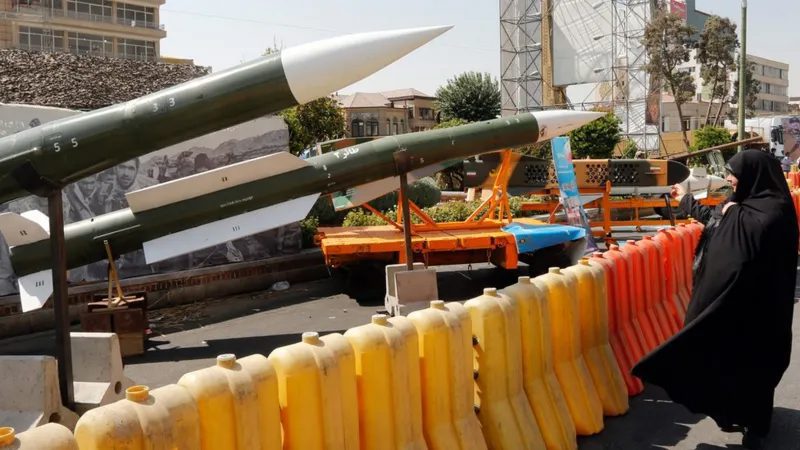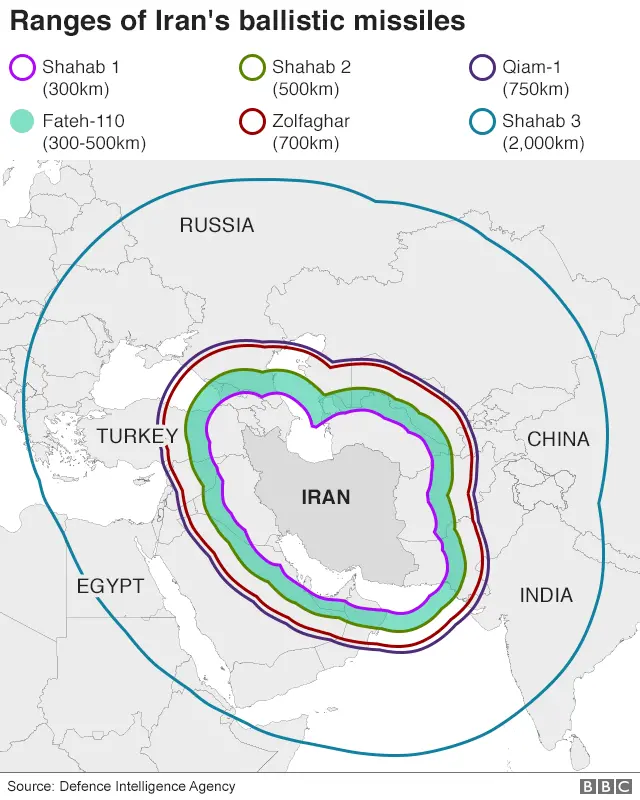Israel has braced for an attack by Iran or its proxies as warnings grew of retaliation for the killing last week of a senior officer in Iran’s embassy in Damascus.
Israel did not take responsibility of for the attack in which Brigadier General Mohammad Reza Zahedi, a top leader in the Quds Force of the Iranian Revolutionary Guard Corps, and six other officers were killed on April 1 while attending a meeting in the Damascus embassy compound.
Several nations, including France, Poland, Russia, and India, have issued travel advisories to their nationals advising them not to visit the area, which is already uneasy because to the ongoing seven-month conflict in Gaza. According to John Kirby, a spokesman for the White House National Security Council, Iran poses a serious and genuine threat.
How might Iran retaliate against Israel?
Iran has cultivated an array of ballistic missiles and drones through a program that has long been a source of concern for Western powers. These missiles constitute a significant component of Tehran’s military capabilities, particularly as it considers retaliatory actions against Israel following a strike on its Syrian embassy.
According to the U.S. Office of the Director of National Intelligence, Iran possesses the largest stockpile of ballistic missiles in the region.

Here are some pertinent details:
- A recent graphic published by the semi-official Iranian news outlet ISNA showcased nine Iranian missiles purportedly capable of reaching Israel. Among them are the ‘Sejil,’ capable of traveling at speeds exceeding 17,000 km (10,500 miles) per hour with a range of 2,500 km (1,550 miles), the ‘Kheibar’ with a range of 2,000 km (1,240 miles), and the ‘Haj Qasem,’ boasting a range of 1,400 km (870 miles) and named in honor of Quds Force commander Qasem Soleimani, who was killed in a U.S. drone strike in Baghdad four years ago, as reported by ISNA.
- Iran, recognized as a prominent producer of drones, announced in August the development of an advanced indigenous drone dubbed Mohajer-10, boasting an operational range of 2,000 km (1,240 miles) and endurance of up to 24 hours, with a payload capacity of up to 300 kg (660 pounds).
- Iran asserts that its ballistic missiles serve as a critical deterrent and retaliatory measure against the United States, Israel, and other potential regional adversaries, while simultaneously denying any pursuit of nuclear weapons.
- Last June, Iran unveiled what officials described as its inaugural domestically produced hypersonic ballistic missile, as reported by the official IRNA news agency. Hypersonic missiles possess the capability to travel at least five times faster than the speed of sound and follow a complex trajectory, rendering interception challenging.

What do Western experts say about Iran’s military capabilities?
Despite opposition from the United States and Europe, the Islamic Republic has affirmed its intention to expand its defensive missile program.
- According to the Arms Control Association, a Washington-based non-governmental organization, Iran’s missile program primarily draws from North Korean and Russian designs and has received support from China.
- The Arms Control Association outlines Iran’s arsenal of short-range and medium-range ballistic missiles, including the Shahab-1 with an estimated range of 300 km (190 miles), the Zolfaghar with 700 km (435 miles), the Shahab-3 with a range of 800-1,000 km (500 to 620 miles), the Emad-1, a missile currently in development with a projected range of up to 2,000 km (1,240 miles), and the Sejil, also under development, with an anticipated range of 1,500-2,500 km (930 to 1,550 miles).
- Additionally, Iran possesses cruise missiles such as the Kh-55, an air-launched nuclear-capable weapon boasting a range of up to 3,000 km (1,860 miles), and the advanced anti-ship missile Khalid Farzh, with a range of approximately 300 km (186 miles) and the capacity to carry a 1,000-kg (1.1-ton) warhead.







![FILE Iran has fired missiles at targets in Syria, Iran and Pakistan this week [File: Iranian Army/WANA via Reuters]](https://mmnews.tv/wp-content/uploads/2024/02/Iranian-missiles-750x412.jpg)


























